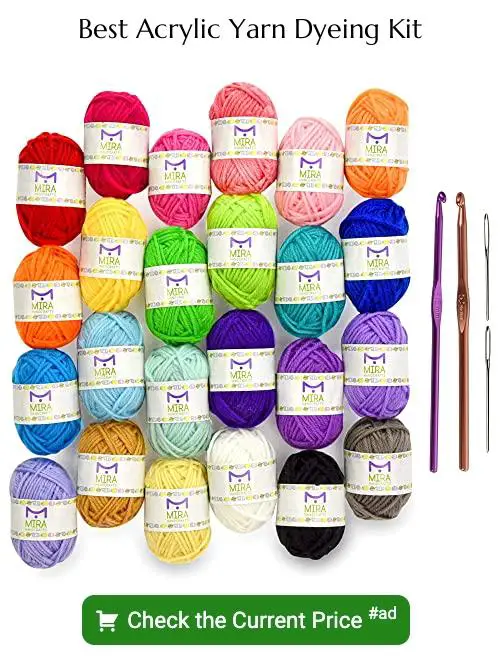Harness the power of color in your yarn crafts by learning how to dye acrylic yarn, because adding a personal touch elevates every project.
Dyeing acrylic yarn isn’t as daunting as it may seem. In fact, with the right materials and a little patience, you can transform your yarn into a vibrant, custom-colored material perfect for your next project.
This process involves specific dye meant for synthetic fibers like acrylic, a dye pot, and heat. It’s important to note that regular fabric or fiber dyes won’t work on acrylic yarn due to its unique properties.
By following the steps in this guide, you’ll learn the nuances of dyeing acrylic yarn, ensuring you get the perfect color every time. So, whether you’re looking to dye a small bundle or a large batch, this article has got you covered.
Key takeaways:
- Acrylic yarn requires specific dyes for successful coloring.
- Basic and disperse dyes are suitable for acrylic yarn.
- Rit Dye does not work on acrylic yarn due to its composition.
- Disperse dyes are ideal for pale to medium shades on acrylic yarn.
- Safety measures should be followed when using disperse dye.
Understanding the Types of Dyes for Acrylic Yarn
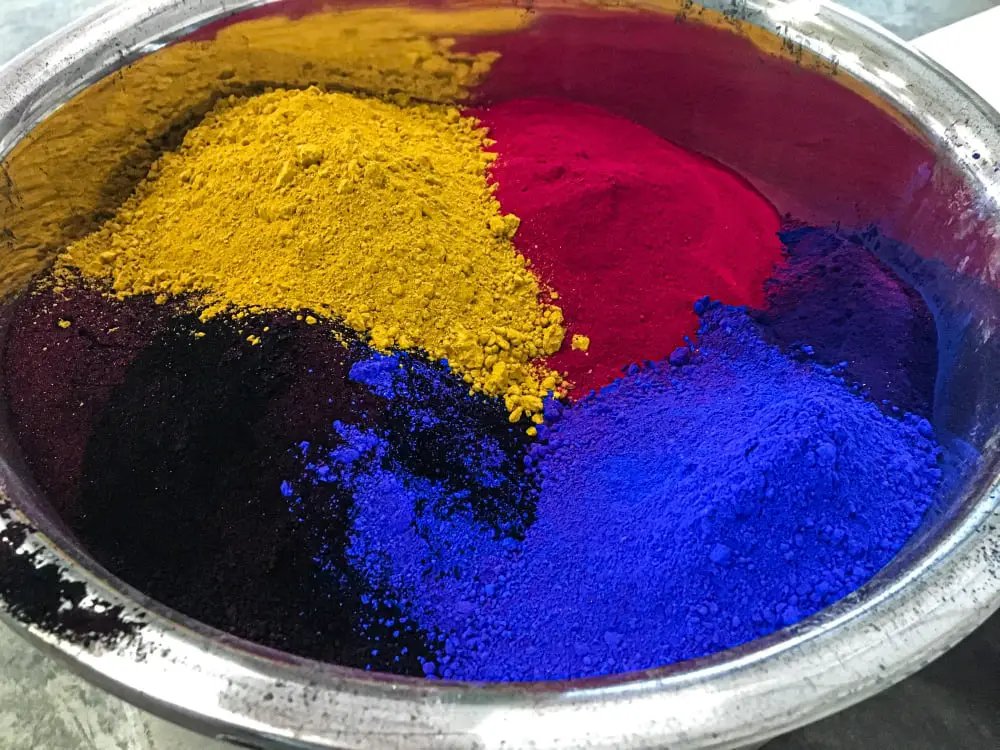
Acrylic yarn exhibits unique properties due to its base material: a synthetic polymer, and hence, can’t be dyed using conventional methods or the same dyes used for natural fibers like cotton or wool. There are two primary types of dyes suitable for acrylic yarn, namely, basic and disperse dyes.
Basic dyes, also known as cationic dyes, attach to the fiber with the help of an acidic solution. They work well on acrylic yarn, producing intense colors, but the resulting colorfastness may vary. High washing fastness is their main benefit.
Disperse dyes, on the other hand, are designed for synthetic fibers. They provide a smoother color application but may not afford the same vibrancy as basic dyes. Disperse dyes require heat to penetrate the fiber, offering reasonable washing fastness.
Remember, regardless of dye type, the process might not leave the yarn as soft as it was initially, and the dyed yarn may lose its original luster. It’s also crucial to note that dyes don’t offer an extensive color range due to acrylic’s dye-resistant nature. Having this understanding will help you make an informed choice for your yarn dyeing project.
Why Rit Dye Doesn’t Work On Acrylic Yarn
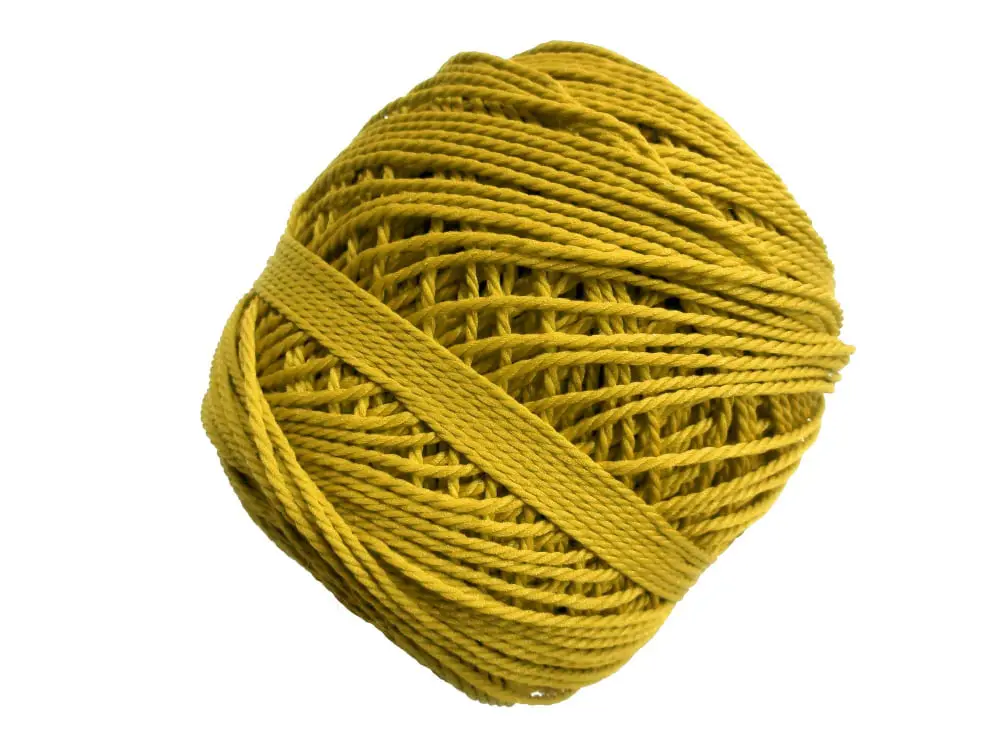
You may wonder why your attempts to use Rit Dye on acrylic yarn haven’t resulted in the vibrant, lasting color you were hoping for. This disappointment can be attributed to the nature of Rit Dye which is a union dye, meant primarily for natural fibers like cotton, silk, and wool.
Acrylic is a synthetic fiber, which means its molecular structure is different from natural fibers. Union dyes need to bond with these natural structures to create a lasting color. Since acrylic lacks these structures, the dye has nothing to cling to. It simply washes away, leaving your yarn nearly the same color as before.
Now, this is not to say you can’t dye acrylic yarn. With the right type of dye, you can definitely add a splash of color to your projects. But the key is to understand what works for each type of fiber and why to get the desired results.
Using Disperse Dye for Pale to Medium Acrylic Yarn Shades
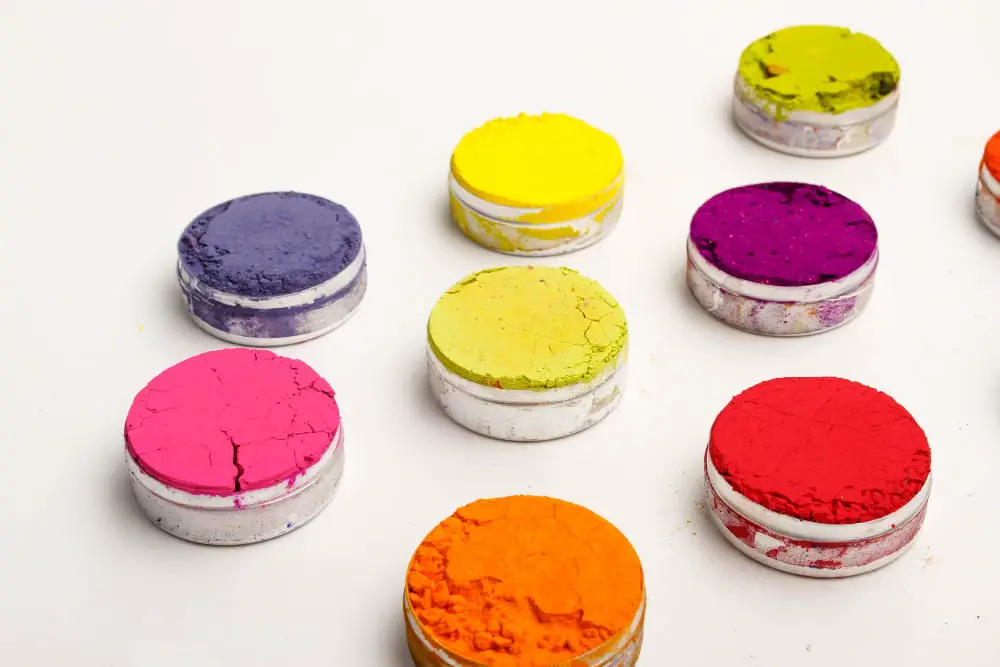
Disperse dyes, designed specifically to bond with synthetic fibers, are ideal for acrylic yarns. These dyes deliver a range of pale to medium shades, making them a versatile choice for your projects. It’s important to note that achieving dark or vibrant colors with disperse dye and acrylic yarn can be challenging due to the yarn’s resistance to dye penetration.
1. Heat: Disperse dyes require heat to bond with the yarn. The temperature should be approximately 250-270°F (120-130°C) for successful dyeing.
2. Time: Acrylic yarn needs enough time, usually about 30-45 minutes, under the heat for the dye to bind correctly.
3. Proportion: Always ensure that the amount of dye is proportionate to the weight of the yarn to ensure even distribution.
4. Solubility: Disperse dyes are not water-soluble. Hence, they need carriers like vinegar or specific commercial products to dissolve properly.
Remember, the color you end up with depends a lot on trial and error. Plus, the actual color can slightly differ from what appears on the dye packet. A good rule of thumb is to test samples until you achieve the desired shade. The world of yarn dyeing is fun and experimental, so don’t hesitate to explore.
Instructions for Using Disperse Dye On Acrylic Yarn
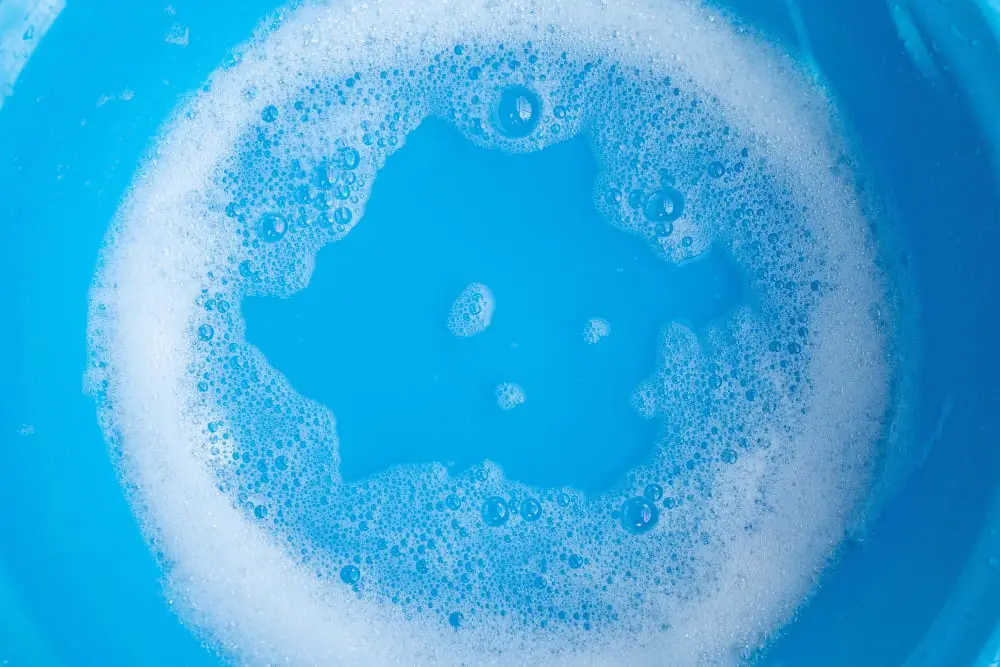
Start by thoroughly cleaning the yarn to get rid of any oils or residues – a simple soak in warm water and unscented dish soap will do. Rinse clean and leave it damp.
Preheat the dye bath (water) just before a simmer, around 185°F (85°C).
Add the pre-mixed dye. For every pound of yarn, you need one to three teaspoons of dye, depending on the desired color intensity. Dissolve the dye powder fully in a separate container with boiling water before introducing it to the dye bath.
Carefully lower the yarn into the bath and stir gently for even distribution of dye. Heat is crucial in this process. Maintain the bath at a near simmer for around half an hour to an hour.
Gradually cool down the dye bath along with the yarn. Rapid temperature changes could damage the yarn. Rinse the yarn after cooling. If the water runs clear, it signals that all excess dye has been washed off.
For lighter shades, less dye and less heating time are needed. Constant gentle stirring promotes an even color result. Always remember, acrylic is sensitive to high temperatures, so take extra care not to boil it. You may not achieve very dark shades with acrylic, but a range from light to medium intensity is absolutely possible.
Safety Measures When Using Disperse Dye At Home

Care and caution are mandatory when handling disperse dye at home, primarily due to the dust that can be harmful if inhaled or exposed to the skin. Here are some safety considerations:
1. Ventilation: Ensure to have a ventilated room while dyeing yarn to steer clear of inhaling dust particles gently floating around.
2. Protective gear: Utilize latex or nitrile gloves and wear old clothes you wouldn’t mind getting stained in the process. Protective eyewear can also be used for further precaution.
3. Cleanliness: After the process, clean every surface and tool used thoroughly to avoid unwanted stains and possible skin exposure.
4. Storage: Disperse dye should be stored in a secure place, out of children’s reach and away from edible items.
5. Proactive measures: Should you accidentally ingest the dye or get it in your eyes, seek immediate medical attention.
Limitations of Color When Dyeing Acrylic Yarn
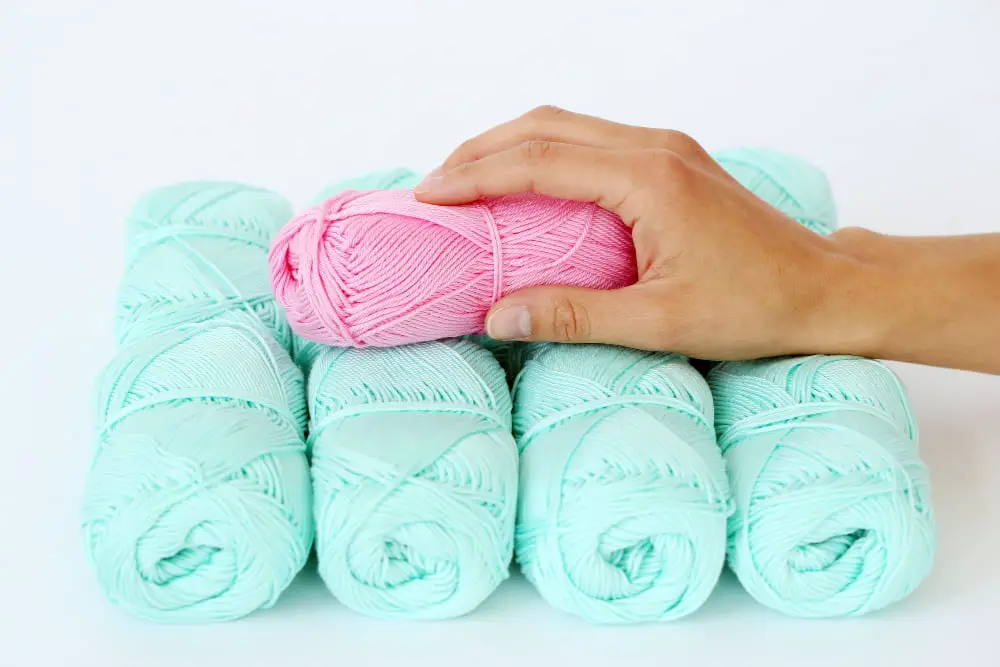
While acrylic yarn offers a lot of flexibility, its color limitations in dyeing should be acknowledged. Unlike natural fibers, which can absorb a wide spectrum of colors, acrylic tends to be more restrictive.
Firstly, achieving very bright or deep hues can be challenging because acrylic fibers do not interact with many conventional dyes. The pigments can sit on the surface instead of penetrating the yarn which results in less vibrant shades.
Additionally, there’s a degree of unpredictability with the end result. Each batch might only bear a slight resemblance to the dye’s initial color. Consistency may be hard to maintain if large projects require more than one dye batch.
Lastly, colorfastness might also be an issue. The dyed color may not hold its tone as effectively under frequently used and washed conditions as the original ones. It’s important to test on a small acrylic yarn sample first before dyeing your project materials, as results can vary.
These points do not discourage from experimenting with dyeing acrylic yarn, but rather underline the need for a different approach and expectations.
Alternative Sources and Brands for Acrylic Yarn Dye

If you’re finding it hard to locate disperse dyes for your acrylic yarn coloring projects, don’t fret. There are other brands that offer high-quality dyes made explicitly for synthetic fibers like acrylic. Jacguard iDye Poly, Dyelon Multi-Purpose, and FabricMate Super Tip Markers, are just a few options to explore.
Jacquard’s iDye Poly comes in a variety of hues and offers an exceptionally vibrant color payoff. Dyelon Multi-Purpose, although better known for its fabric dyes, also offers a multi-purpose variant fit for synthetic fibers. FabricMate Super Tip Markers might not be your traditional dye but can be used very creatively to achieve unique color patterns on your yarn – perfect for small scale dye jobs.
Always remember to observe the manufacturer’s instructions to achieve the best results. Opt for a test run with a small piece of yarn to ensure the dye delivers the desired shade.
FAQ
Can you dye 100% acrylic yarn?
Yes, you can dye 100% acrylic yarn by using disperse dyes; these require dissolving the dye in heated water, adding the acrylic yarn, keeping it at a simmer while stirring constantly, and letting it cool in the dyebath.
What is the best fabric dye for acrylic fibers?
The best fabric dye for acrylic fibers is disperse dye.
Which dye is used for acrylic?
Cationic dyes are typically used for dyeing acrylic.
What is the process of dyeing acrylic yarn at home?
Dyeing acrylic yarn at home involves soaking the yarn in a mixture of white vinegar and water, then boiling it in a pot containing water and acrylic paint or ink for color, stirring occasionally until the desired shade is achieved.
Are there any precautions to take when dyeing acrylic yarn?
When dyeing acrylic yarn, ensure to use dye specifically designed for synthetic fibers, as regular dyes intended for natural fibers won’t adhere properly.
What are the possible color outcomes when dyeing acrylic yarn with different types of dye?
Acrylic yarn, due to its synthetic composition, does not effectively hold traditional dyes, resulting in either very pale or uneven color outcomes; however, using dyes specifically formulated for synthetic fibers like RIT DyeMore Synthetics can yield intensified, vibrant and uniform color results.
